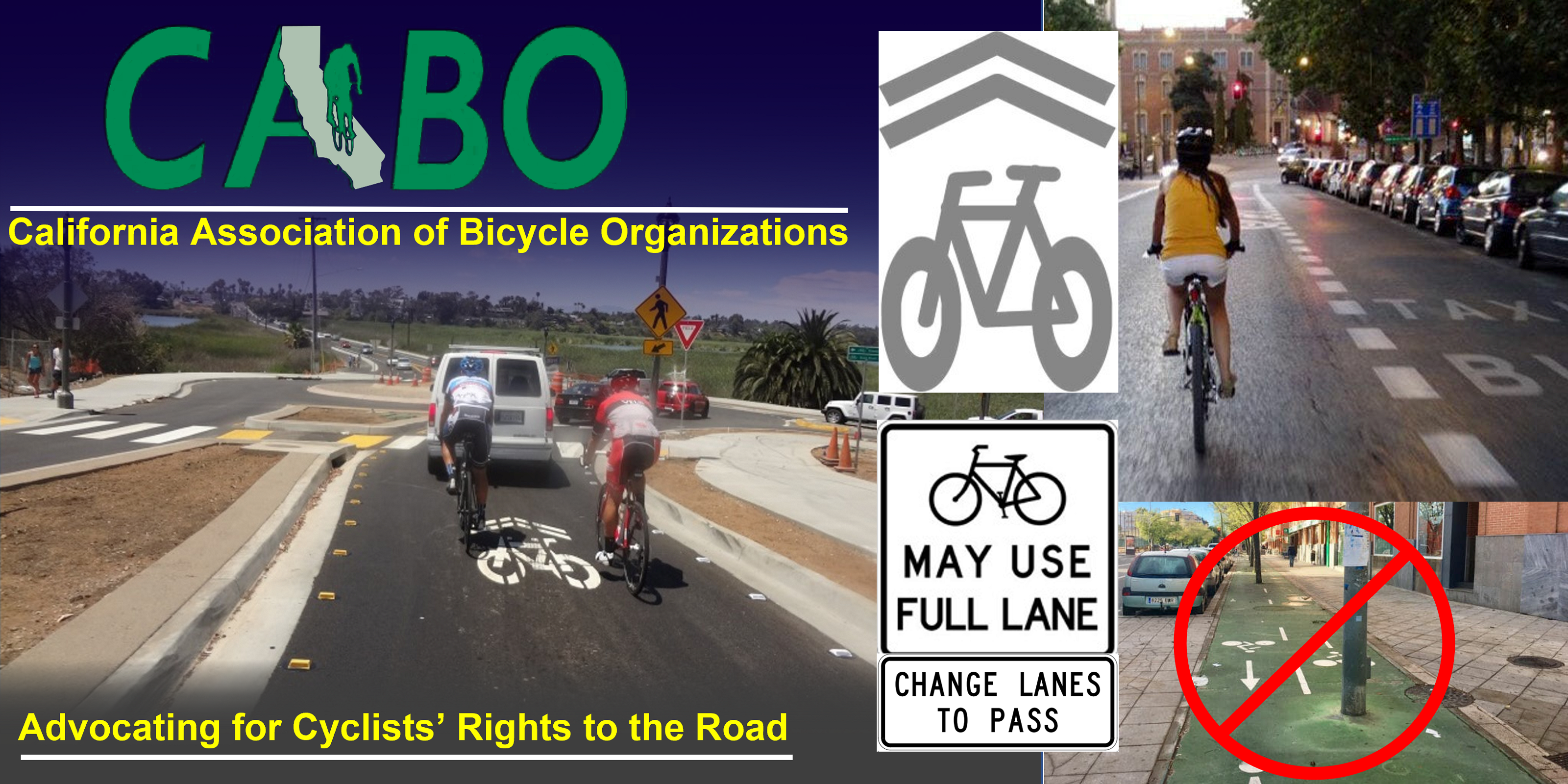Previously the San Diego County Bicycle Coalition sponsored one course, and now CABO is providing LAB Traffic Skills 101 training for the CHP; so far three courses and approximately 30 CHP folks have been through the classroom, bike skills, and road riding experiences with more to come.
One of the officers provided these comments for evaulation of the course, “I currently review traffic collision reports for my area, and have since applied my new found knowledge in three separate incidents. I now understand proper lane positioning, bike lane configurations, and other bicycle movements when it come to cyclists trying to achieve their destination goals at/through an intersection.” and
“This course provides the philosophy, logic, and sound reasoning behind bicycle placement/movement, as well as addresses right-of-way issues.”
Marie Schelling of the CHP wrote and was successful at getting funding from OTS to pay the training costs, and she was instrumental to getting several CHP area supervisors to allocate the officers and staff time for the day and a half of training. Cudos to Marie!
I provided the standard League of American Bicyclists Road 1 “Street Skills” material, half classroom and half on the roads and paths nearest the class sites. The participants previous bicycling experiences varied widely, a few had club and event riding experiences, all had ridden as children, but many had not been on a bike – especially not in general traffic – for YEARS or EVER. What an awakening it can be for some/most people to hear, see, and then experience that “roads are for people, not just for people in cars!”
Although at one four-way Stop intersection I learned something. It happened just as a motorist who had the next turn to go – right of way – waited and waved for our group of bicyclists to go ahead even though we’d come to the intersection after her – it was the motorist’s turn to go. You may have experienced this? I call it the “let the poor person on a bike go first” response. Anyway, the inappropriate hesitation causes unnecessary delay, confuses others expectations, and can lead to collisions. Long story short, when the CHP student bicyclist with the gun on her hip waived the motorist on, the motorist was quick to comply! Teachable moment – an authoritative presence can straighten out some situations quickly. (No, I will not start riding armed… yes, even if “open carry” is allowed.)
I see nothing but good coming from helping law enforcement personnel to become competent bicyclists. Next maybe we could get some judges and magistrates to learn too that bikes belong, even “in the way.”
Jim (couldn’t be prouder) Baross
CABO President





